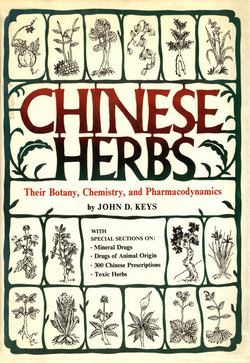Читать книгу Chinese Herbs - John D. Keys - Страница 10
На сайте Литреса книга снята с продажи.
EXEGESIS
ОглавлениеUPON COMPLETION of the individual monographs which comprise this book, the author was faced with the decision on the manner in which they should be organized. Three alternatives presented themselves, namely (1) alphabetization by the romanized Chinese name; (2) over-all alphabetization by generic plant name; and (3) classification by traditional botanic procedure of division, class, subclass, order, and family, the genera within each family being arranged alphabetically. The latter arrangement was chosen as the most logical, for it had become evident through all my researches and wanderings that this work was indeed of botanical foundation.
At this point I should like to explain to the reader the basic form used in the treatment of each botanical:
1. The Latin botanical name (and family)
2. The common English name, if any
3. A complete botanical description (index numbers throughout the text refer to bibliographical entries on p. 361)
4. The natural habitat
5. Botanical synonyms, if any
6. The pharmaceutical description of the drug, including physical description, taste, odor, and toxicity
7. Phytochemical analysis
8. Pharmacodynamic investigations, together with any related use of the same drug in other pharmacopeias, as well as any references to related plants
9. Chinese therapeutic usage of the drug
10. Dosage given by the Chinese herbals (These figures have to be accepted as extremely generalized, for the particular drug may or may not be taken in conjunction with other medicament. Basically, the dosages given are intended to represent the daily dosage to be made into a single decoction or tea, divided into two or three drafts. On the other hand, many medications are meant to be given in powder or pill form, in which case these dosage figures would not at all coincide. A subject of constant ambiguity to the author, these figures are given merely as hypothetical reference.)
11. Incompatible drugs, if any
12. Lastly, related plants of the same genera used for the same purpose, if any
Note: Each plant description is accompanied by a small illustration, except for a few plants for which illustrations were not available. The larger illustrations give a closer or more detailed view, but where a large picture of a certain plant was not available a related plant of the same genus used for the same purpose is shown. The Chinese characters given with the illustrations are read from right to left.
